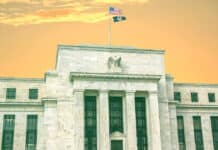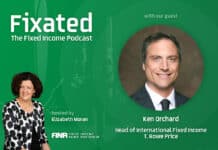
After one of the most volatile stretches in recent memory, the middle of 2025 offers an important moment to pause and take stock. Over the past few months, forecasts have been made and revised, policy announcements have been introduced and then walked back, and markets have swung between fear and optimism. Whiplash isn’t just a metaphor—it’s the lived experience of investors trying to make sense of it all.
Amid the noise, a clearer picture is starting to emerge. The U.S. economy remains resilient but is slowing, policy uncertainty continues to cast a long shadow, and markets are adjusting to a more complicated set of signals—rising fiscal stress, sticky inflation, and shifting global dynamics. With tariff and tax decisions still pending, visibility remains low beyond the next few months, but the near-term contours of the macro and market path are beginning to take shape.
1. A resilient economy, but growth headwinds are building
Trade tensions have undoubtedly taken a toll. Escalating tariff uncertainty has delayed corporate investment, frozen hiring plans, and weighed on both business and consumer sentiment. And yet, despite this, the U.S. economy has so far avoided recession, supported by the continued resilience of household and corporate balance sheets as well as the lingering momentum from a strong first quarter.
Our base case remains for the U.S. to narrowly avoid recession as the economy navigates persistent policy uncertainty. Encouragingly, this forecast was intact even before the U.S.-China trade truce was announced in early May, as we assumed that the U.S. administration would recognise the risks and back away from the economic ledge.
2. Tariff uncertainty persists—and may worsen
Tariff noise is likely to persist over the coming months. Although the Court of International Trade unanimously ruled against President Trump’s tariffs, initially imposed through the International Emergency Economic Powers Act (IEEPA), it is unlikely to be the end of the tariff story. The administration has indicated that it will appeal the decision, and if that fails, it has other avenues it can pursue to ensure that Trump’s tariff agenda takes effect. If anything, tariff uncertainty will likely continue.
Should the administration succeed in reasserting tariffs, the average rate could settle at 12.5%—substantially down from the 28% level before the announced U.S.-China trade truce, but still well above the 2% level that prevailed at the start of the year. Note, too, that the average tariff rate is still biased higher. Not only has Trump not announced additional sectoral tariffs, but his recent threat to raise European Union tariffs to 50% emphasises the risk that tariffs may settle at a higher level once the 90-day reprieve ends.
Also Read: The Push and Pull of Fundamentals vs Recession Indicators
3. The Fed walks a tightrope
The Federal Reserve is navigating a narrow path. While they expect the economy to soften, persistent trade uncertainty is ripe ground for monetary policy missteps, particularly when inflation is already running above target and expected to see a tariff-induced boost in Q3, and economic data remains resilient. Many analysts have argued that the Fed should focus on the full employment side of its mandate and re-start rate cuts immediately. Yet, with both large and small businesses indicating that they plan to hold onto their workers and ride out the tariff storm, only a modest weakening in the jobs market is likely, further reducing the urgency for Fed support. We expect the Fed to wait until Q4 before it reduces policy rates.
4. Growth-oriented policy: Deregulation and fiscal expansion
Two growth-friendly policy measures may help mitigate trade-related headwinds. First, a renewed push for deregulation—particularly in the energy and financial sectors—echoes pro-growth efforts from Trump’s first term and could provide an important boost to economic growth. Second, modest fiscal expansion is on the table. While its impact may be somewhat muted, combined, these growth-friendly measures should help to offset the negative headwinds from tariffs.
5. Fiscal stimulus: Modest in impact, risky in optics
The passing of the administration’s major tax and spending legislation, which largely involves extending the 2017 Tax Cuts and Jobs Act, is predominantly a continuation of existing policy and would not provide a new boost to economic growth. Alongside some incremental modest tax cuts, which would be funded by tariff revenues and some spending pullback, not only is the direct economic boost expected to be fairly modest, but, more importantly, the fiscal package is unlikely to meaningfully improve the U.S.’s long-term fiscal trajectory. Moody’s recent downgrade of U.S. debt underscores that fiscal credibility remains under pressure and that market concerns regarding the U.S. fiscal picture are likely to persist.
6. Bond market tensions: Long yields up, short yields anchored
In recent weeks, renewed fiscal fears, alongside improved U.S. growth forecasts and sticky inflation concerns, put upward pressure on long-term U.S. Treasury bond yields. With bond vigilantes circling, markets are likely to demand spending cuts that are large enough or economic growth that is strong enough to bring the deficit under control, suggesting that long-term Treasury yields are likely to remain elevated over the near term. By contrast, the slowing economy and the prospect of Fed rate cuts later in 2025 should maintain downward pressure on short-term Treasury yields.
7. Equities recover—But risks remain
Equity markets have almost entirely recoupled their losses from earlier in the year, with the S&P 500 posting its strongest monthly gain in 18 months in May. Yet the recovery seems at odds with an economic backdrop characterised by slower growth, higher inflation, and lingering policy uncertainty. Indeed, with the effects of earlier tariff uncertainty likely to begin manifesting in economic and inflation data over the coming month, near-term volatility is expected to persist as these tensions play out.
8. Higher yields pressure equity valuations
In addition to deteriorating economic data, another key vulnerability for the equity market may be the bond market itself. Although equity returns and bond yields are typically positively correlated, if the rise in yields is due to fiscal concerns, the correlation can turn negative, weighing on equity returns as the potential for multiple expansion becomes increasingly strained. As a result, persistent debt and deficit fears that drive up bond yields may test the equity market.
9. A Dollar under pressure
One of the most notable shifts in markets in recent months has been the decline in the U.S. dollar, which has defied both interest rate differentials and the traditional rush for safe havens during times of heightened volatility. With weakness reflecting concerns over the domestic outlook and institutional credibility, a further weakening is possible. Not only is the USD still overvalued, but heightened tariff policy uncertainty, lingering fiscal woes, and growing animosity toward the U.S. are likely persistent headwinds.
10. U.S. dominance: Structurally intact
While there is cyclical risk associated with the U.S., the structural investment case—which has driven outperformance in recent years—remains compelling. The long-term drivers—technology leadership, innovation, deregulation, and productivity—are still very much in play. Moreover, in the absence of a credible reserve currency alternative, U.S. exposure will remain a foundational component of global portfolios.
Implications for investors
The first half of 2025 has tested investor conviction, challenged assumptions, and reinforced just how quickly the macro and market narrative can shift. While the outlook beyond the next few months remains clouded by unresolved policy decisions, the core dynamics—slower growth, persistent inflation, elevated fiscal risk—are now more visible.
Heading into the back half of the year, portfolios should tilt toward resilience and selectivity.
As such, investors should consider:
-Short-duration, high-quality fixed income for stability and income.
-Equities with pricing power, strong margins, and clean balance sheets, especially in sectors benefiting from deregulation or insulated from trade frictions.
-Global diversification to hedge dollar weakness and access non-U.S. growth opportunities.
-Active management to identify mispriced risk and sector rotation opportunities in an increasingly idiosyncratic environment.
Even in periods of high uncertainty, there are still ways to position portfolios to take advantage of growing divergences beneath the surface—between sectors, regions, and asset classes. Cutting through the noise means staying grounded in what is known, alert to what is changing, and prepared for what is next.
































